The Sequel: "How the Train Got to Silver Plume"
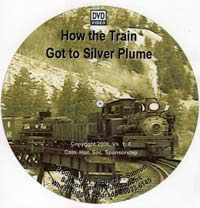 The story begins in 1869 when railroad tracks from the Pacific coast were joined with tracks to the east coast, thus linking America. A year later, tracks from the north and the east were completed into Denver and the Colorado mining industry had an outlet for its products. Unfortunately, the narrow canyons up to the mining areas could not accomodate standard rail tracks.
The story begins in 1869 when railroad tracks from the Pacific coast were joined with tracks to the east coast, thus linking America. A year later, tracks from the north and the east were completed into Denver and the Colorado mining industry had an outlet for its products. Unfortunately, the narrow canyons up to the mining areas could not accomodate standard rail tracks. 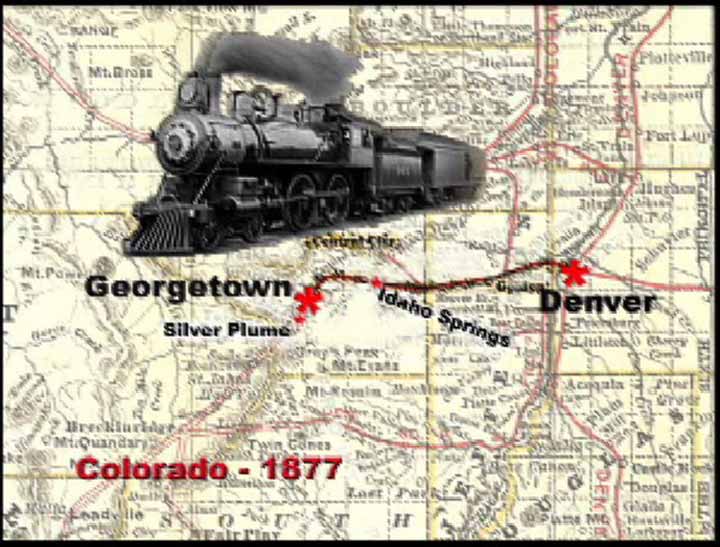 Horse drawn wagons had to be replaced, so narrow guage trains were created and tracks laid. Finally, in 1877 the Colorado Central Railroad arrived in the silver rich town of Georgetown (click on the map).
Horse drawn wagons had to be replaced, so narrow guage trains were created and tracks laid. Finally, in 1877 the Colorado Central Railroad arrived in the silver rich town of Georgetown (click on the map).
Two years passed and major silver discoveries in Leadville led three railroads to compete for who could get there first. Executives of the Union Pacific formed a corporation to lay tracks via Silver Plume, but first they had to invent a way to handle the steep incline between the two towns. The two miles were traversed with four miles of track that looped back on itself with a very high bridge known as the Devil's Gate (pictured here). Rail service reached Silver Plume in the Spring of 1884, the same year as the November fire.
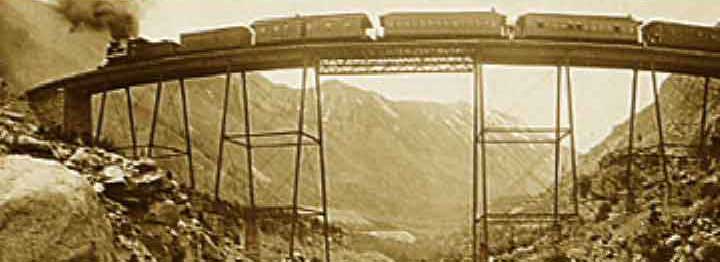
After the 1983 Silver Bust, the mines closed and most of the population moved away, but the railroad became a "must do" experience for tourists.
At the turn of the century, a pavilion was built at the west end of Silver Plume serving meals to travelers, 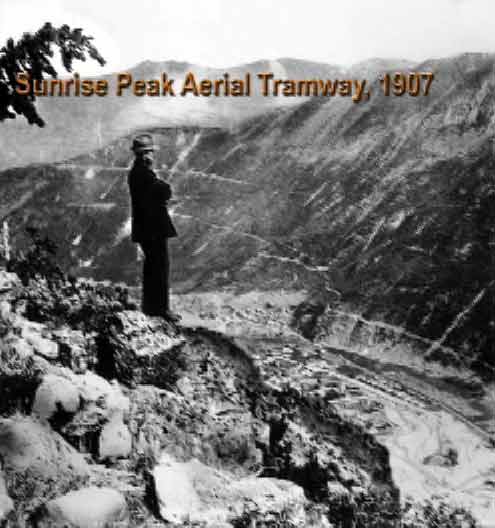 a tramway was extended 3,000 feet up Sunrise Peak, and the Argentine Central Railroad was completed connecting the town to their mines on Mount McClelland as well as taking tourists to the 14,007 ft summit. By the end of World War I (1918), automobiles began to displace rail tourism. Gradually services were cut back until trains were terminated altogether in 1939 and the tracks and bridges sold for scrap iron.
a tramway was extended 3,000 feet up Sunrise Peak, and the Argentine Central Railroad was completed connecting the town to their mines on Mount McClelland as well as taking tourists to the 14,007 ft summit. By the end of World War I (1918), automobiles began to displace rail tourism. Gradually services were cut back until trains were terminated altogether in 1939 and the tracks and bridges sold for scrap iron.
Twenty years passed and in 1959 a committee from the Colorado Historical Society formed the Georgetown Loop Historical Mining & Railroad Park. In 1973 they began laying new track and rail tours got underway and became longer and longer as the construction continued.  Finally the Devil's Gate trestle was completed in 1983 (pictured here) and the park was dedicated a year later for the public.
Finally the Devil's Gate trestle was completed in 1983 (pictured here) and the park was dedicated a year later for the public.
Thousands of visitors come from around the world every summer to experience this museum on wheels. They thrill at the towering peaks, the sight when crossing atop the 95ft high trestle. They learn about mining silver in the Lebanon-Everett Mine, and oldsters get to teach their youngsters about the part steam locomotives played in our nation's history.
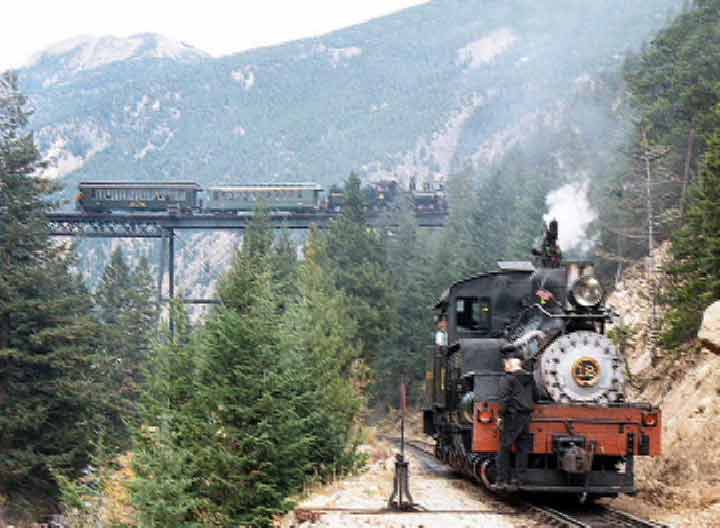 This film was donated by its producers, Lawrence Knowles and Richard Salmon, to the Georgetown Loop Historical Park where it is shown along with two other films, in the viewing room beside the gift shop inside the Georgetown terminal building. It cannot be copied or sold due some copyrighted content, but you can borrow a copy to view by contacting Rich Salmon.
This film was donated by its producers, Lawrence Knowles and Richard Salmon, to the Georgetown Loop Historical Park where it is shown along with two other films, in the viewing room beside the gift shop inside the Georgetown terminal building. It cannot be copied or sold due some copyrighted content, but you can borrow a copy to view by contacting Rich Salmon.










